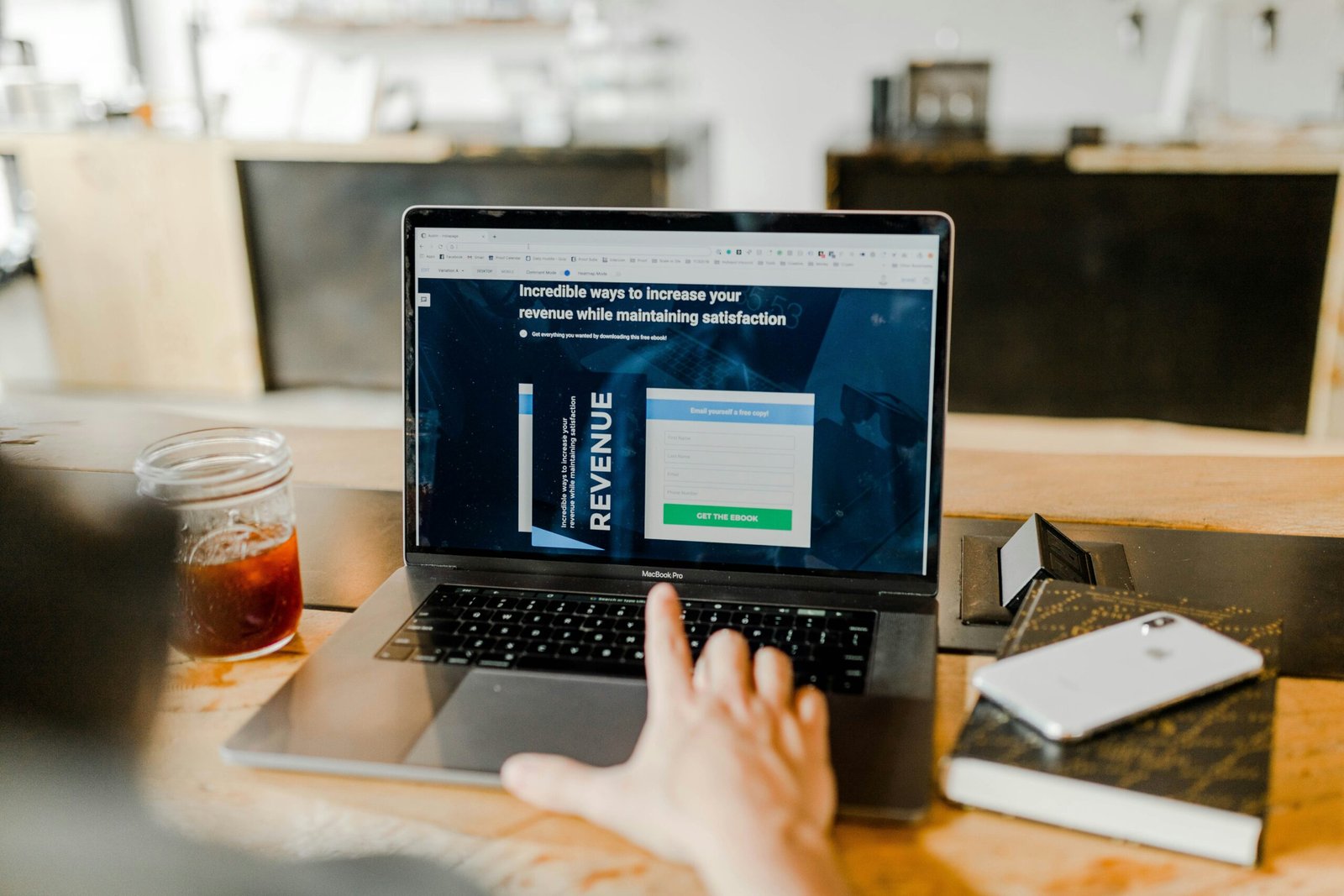“`html
Introduction: The Importance of Email Newsletters in Legal Tech
Email newsletters have emerged as indispensable marketing tools, especially for legal tech firms aiming to educate and engage their clientele. The legal industry is increasingly reliant on innovative technological solutions to streamline operations, enhance client service, and stay ahead of regulatory changes. As competition within the market intensifies, distinguishing one’s firm becomes paramount.
Well-crafted email newsletters can serve multiple strategic purposes. Firstly, they position a company as an intellectual authority within the legal tech domain, sharing valuable insights and thought leadership content. This not only educates potential clients about the array of products available but also illustrates their practical applications in real-world scenarios. By doing so, firms can cultivate a sense of trust and credibility, essential elements in client relationship-building.
Moreover, newsletters provide a consistent communication channel. By regularly reaching out to clients with relevant updates, case studies, and success stories, legal tech firms can maintain top-of-mind awareness and foster long-term relationships. This, in turn, leads to enhanced client retention and loyalty. Additionally, newsletters can serve as a platform to highlight unique selling points and competitive advantages, effectively differentiating the firm from its competitors.
The role of email newsletters extends beyond mere information dissemination. They are pivotal tools for nurturing leads and converting prospects into loyal clients. By integrating educational content about innovative solutions and their benefits, legal tech firms can empower their clients, making them better informed and more confident in their decision-making processes.
In an era where digital communication is paramount, a strategically developed email newsletter can be a cornerstone of a successful marketing strategy for legal tech firms. It facilitates ongoing engagement with clients while simultaneously educating them about novel solutions, cementing the firm’s status as a trusted partner in their technological evolution.
Crafting Content: Key Topics to Educate and Engage
In the realm of legal tech, the content you present in email newsletters plays a crucial role in both educating and engaging your audience. The inclusion of new product features is an essential topic that keeps clients informed about the latest advancements. Highlighting these features not only showcases the continuous innovation of your legal tech firm but also enables clients to maximize the benefits of your solutions.
Case studies demonstrating successful implementations serve as powerful testimonials and offer practical insights into real-life applications of your products. By clearly illustrating how your technology has resolved particular challenges, you provide a tangible proof of value, which can significantly influence potential clients.
Industry news and trends are equally important as they position your firm as a thought leader in the ever-evolving landscape of legal technology. Providing updates on regulatory changes, emerging technologies, and market trends ensures that your audience remains well-informed and can anticipate future developments.
Practical tips for integrating legal tech solutions into daily workflows constitute another vital content category. Educational tips and best practices help clients to seamlessly incorporate new tools into their operations, thus enhancing their efficiency and productivity. Such actionable insights, when delivered regularly, foster trust and loyalty among your readers.
To maintain a balanced and engaging newsletter, it is essential to intersperse promotional content with valuable and informative pieces. This approach not only prevents the newsletter from becoming overly sales-driven but also ensures that the recipients perceive it as a reliable source of knowledge.
Diversifying the content formats further enhances engagement. Articles provide in-depth information, while videos can offer visual demonstrations of product features or client testimonials. Infographics distill complex data into easily digestible visuals, and interactive elements, such as polls or quizzes, actively involve the audience, thus making the newsletter more dynamic and engaging.
Design and Delivery: Best Practices for Maximal Impact
The design and delivery of email newsletters are critical components for ensuring that legal tech firms effectively engage their clients. A visually appealing email newsletter not only captures attention but also fosters better information retention and interaction. Key to this is a mobile-friendly design; with the increasing reliance on smartphones, it’s imperative that newsletters are easily navigable on smaller screens. Utilizing responsive design principles ensures that the content resizes gracefully across all devices, maintaining both aesthetics and functionality.
Incorporating compelling visuals and graphics can significantly enhance the readability of newsletters. High-quality images, infographics, and relevant graphics break up text, making the content more digestible. Additionally, strategically placed call-to-action (CTA) buttons guide readers towards desired actions, be it scheduling a consultation, exploring a demo, or downloading an insightful whitepaper. Ensure that these CTAs are prominent, visually distinct, and contextually relevant to encourage click-throughs.
The battle for reader attention starts in the inbox. Crafting attention-grabbing subject lines and preview texts is essential to improve open rates. Subject lines should be concise, relevant, and instill a sense of urgency or curiosity. Preview texts should complement the subject line, offering a glimpse into the newsletter content without being repetitive. Avoid clickbait tactics; instead, focus on delivering genuine value that aligns with your audience’s interests and needs.
Frequency and timing are crucial elements of newsletter strategy. Based on industry benchmarks, monthly or bi-weekly newsletters are often effective in maintaining engagement without overwhelming subscribers. Timing is equally important – research suggests that mid-week days, particularly Tuesdays and Thursdays, are optimal for higher open rates. Tailoring the send times to match the peak activity periods of your audience can further enhance engagement.
Segmentation and personalization are fundamental in ensuring content relevance for diverse audience subsets. By segmenting your email list based on factors such as client type, engagement level, or specific interests, you can tailor your newsletters to address the unique needs of each group. Personalization, such as addressing recipients by their name or referencing past interactions, fosters a more personalized and engaging reader experience.
Measuring Success: Analytics and Optimization
For legal tech firms striving to educate their clients on innovative solutions, understanding the performance of email newsletters is paramount. Leveraging analytics allows firms to measure success and make data-driven decisions to enhance newsletter effectiveness. Key performance indicators (KPIs) such as open rates, click-through rates (CTR), conversion rates, and subscriber growth provide valuable insights into how well your newsletters are resonating with your audience.
Open rates indicate the percentage of recipients who open your email, serving as a fundamental metric of audience engagement. A low open rate might suggest that subject lines lack appeal or relevance. In contrast, click-through rates reveal the proportion of readers who click on links within the email, offering deeper insights into the content’s effectiveness in driving traffic or action. Conversion rates, on the other hand, measure the percentage of recipients who complete a desired action after clicking a link, such as signing up for a webinar or downloading a whitepaper. Finally, monitoring subscriber growth helps assess the overall reach and potential impact of your communications over time.
Setting realistic goals tailored to these KPIs is crucial. Start by establishing benchmarks based on industry standards or previous campaigns. Use this data to identify areas of improvement and set achievable targets. A/B testing is an invaluable tool in this process. By creating variants of elements like subject lines, call-to-actions, or even entire email formats, legal tech firms can gauge which approach yields better results. This iterative process of testing, learning, and refining helps in pinpointing the most effective strategies.
Continuous improvement should be a core focus. Analyze results, tweak headlines, experiment with different content formats, and adjust send times based on data insights. Additionally, gather feedback from recipients through surveys or direct interactions to understand their preferences better. Staying abreast of email marketing trends ensures that your strategies remain cutting-edge and aligned with evolving client expectations.



